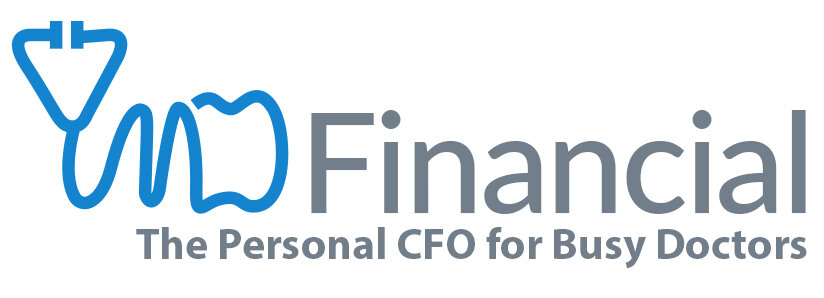May 29th is National 529 Day! In celebration, we will be discussing about 529s and saving for future education expenses. Most of our clients plan for their children to pursue an undergraduate and postgraduate degree. With the knowledge and personal experience our clients have of how expensive schooling can be, they want to save as much as possible for their children’s education. This is why we incorporate education expense saving/budgeting in the financial planning we do, and 529 plans are one great option to accomplish that. Let’s address the 7 things doctors should know about 529 plans:
Number 1: 529 Plans are in the “Tax-Free Bucket”
529s are state-sponsored investment plans for parents/grandparents/etc. to contribute post-tax money for a beneficiary to use and withdraw tax-free for educational purposes.
You may remember from our episode on the tax triangle that the tax-free bucket allows investments to grow tax-free.
Number 2: Plans vary state-to-state
Every state has a 529 plan, but the investment options, funds, and fees will vary.
You do not have to choose an account based on the state you live in or the state the beneficiary goes to school in.
Number 3: The money should ONLY be used for educational expenses
Distributions should be used to pay for education expenses at an approved educational institution. Some qualifying expenses include:
Tuition/fees
Books and supplies
Room or boarding costs
529 plans can be used for private elementary and secondary schools as well as at colleges, universities, vocational schools, and international schools.
There are high penalties for money withdrawn for non-educational expenses.
Number 4: Contributions are considered as “gifts” for tax purposes
The annual gift tax exclusion for gifts in 2021 is $15,000. This means you can contribute up to $15,000 per child—as can your spouse, for a total of $30,000 per child per year without any tax consequences (assuming there are no other gifts that year).
There is a loophole to the $15,000 per year called “super-funding”. If our clients can afford it, we recommend super-funding. This is contributing up to 5 years of gifts at one time. It is allowed, without tax consequences, as long as no other gifts are given for the next 5 years. This gives more time for a larger amount to grow tax-free.
There is a maximum aggregate limit on 529s which can vary by plan.
States also have contribution limits based on the average cost of education in that state. Current limits range between $235,000-$529,000. Though no additional contributions can be made once that limit is reached, the account can continue to grow through the investments.
Number 5: Distribution limits vary
K-12 education: $10,000 can be distributed per student, per year.
Post-Secondary Education: No limit to the distribution amount. However, you want to avoid taking more money out than the qualified education expenses, as this can lead to penalties.
Number 6: 529 Plans can be passed throughout a family
If you don’t empty the account while the beneficiary is in school, the account can be passed to the beneficiary's siblings or to their children to be used for their education.
Number 7: Federal Financial Aid is impacted by 529s
529 plans must be reported in the Free Application for Federal Student Aid (FAFSA®.)
Depending on the owner of the 529 plan, different percentages of the account will be considered as “Expected Family Contribution” when applying for federal financial aid.
This may or may not affect you. Many of our clients expect to earn higher incomes when their children start college and therefore, do not expect much federal student aid for their children.
It’s very important that doctors know what options are out there for funding their children’s educational future. Choosing and funding the right 529 plan that suits their needs and budget is key in being prepared for your children’s future. As every family has a different situation, we recommend that you meet with your financial advisor to find the right choice for you. As with all financial planning, there is a pro and a con to every strategy. The pro of a 529 plan is that it is a tax-advantaged way to save for education. The con is that these funds are extremely static, as there are only certain, specific uses for the funds without facing high penalties and taxes on spending.
Listen on Apple Podcast, Google Podcast or Spotify
CONTACT US
1-888-256-6855
Remember that you can send us any questions or potential topics at: Info@MDFinancialAdvisors.com
Katherine Vessenes, JD, CFP®, is the founder and CEO of MD Financial Advisors who serve 500 doctors from Hawaii to Cape Cod. An award-winning Financial Advisor, Attorney, Certified Financial Planner®, author and speaker, she is devoted to bringing ethical advice to physicians and dentists. She can be reached at Katherine@mdfinancialadvisors.com.

![Doctors, It's National 529 Day [Podcast]](https://images.squarespace-cdn.com/content/v1/561feb4ee4b0de0eb30d6d3c/1621978432894-JTLODACGQ7C2EC53COWW/rochelle-nicole-E9uJ65vwGmE-unsplash.jpg)
